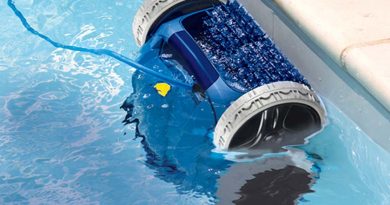6 Different Types of Electrical Wiring and Its Benefits
Electrical wiring refers to the system of conductors and other devices that are used to transmit electricity from a power source to the various outlets, appliances, and other devices in a building. There are several types of electrical wiring used in residential and commercial properties. Some of the most common types include:
1. Romex wiring:
Romex wiring is the most commonly used type of electrical wiring in residential properties. It is made up of two or more insulated wires (typically red, black, and white) encased in a durable plastic sheath. This type of electrical wiring is easy to work with and is often used for both power and lighting circuits.
Romex wiring is designed to safely and efficiently distribute electrical energy around the home. It is also more cost-effective than other types of electrical wiring. Due to its efficient and cost-effective nature, Romex wiring is one of the most popular types of electrical wiring.
2. BX wiring:
BX wiring is something that many homeowners may not be familiar with, but it’s one of the most commonly used types of electrical wiring in residential properties. It is a flexible metal sheath that surrounds the insulated wires. It’s more durable than Romex wiring, but it can also be more challenging.
If you’re a homeowner looking to upgrade or install new electrical wiring, BX wiring could be a great option. It’s incredibly reliable and durable, meaning you won’t have to worry about any issues with your wiring in the future.
BX wiring also has some other benefits. For one, it’s waterproof, meaning it’s an excellent option for any property with the risk of flooding. Additionally, BX wiring is fire-resistant, meaning it won’t catch fire in the event of an electrical short circuit. This makes it an excellent choice for anyone concerned about safety issues with their wiring.
3. UF-B wiring:
Electrical wiring is an essential part of any home or business. It is the backbone of any construction project, connecting all the electronic components and allowing them to operate efficiently. Underground Feeder (UF) wiring is essential in outdoor applications, such as landscapes, gardens, and patios. It is an invaluable tool for ensuring that your outdoor projects are safe and up to code.
UF-B wiring, or Underground Feeder Burial wiring, is designed explicitly for outdoor applications. It’s different from Romex and BX wiring, designed for indoor use. UF-B wiring consists of a plastic sheath that encases the insulated wires. It’s the most reliable type of wiring for outdoor applications.
UF-B wiring is an ideal choice for outdoor projects. It’s highly resistant to moisture and heat, so it won’t degrade quickly when exposed to the elements. It’s also much easier to bury than Romex or BX wiring, making installation faster and more cost-effective. Plus, it’s easier to inspect and replace when necessary.
4. THHN/THWN wiring:
When it comes to electrical wiring for commercial and industrial properties, many people turn to the tried and true THHN/THWN wiring. As a trusted and experienced electrician, Elektriker Ås (It means Electrician As) knows that using this wiring is a great way to ensure a safe and efficient system.
So what is THHN/THWN wiring? This type of wiring comprises two insulated wires, usually red and black, encased in a plastic sheath. This sheath helps protect the wires from the elements, such as water, dust, and physical damage. It also helps reduce the risk of short circuits, which is always a concern when dealing with electricity.
The THHN/THWN wiring system is more durable than Romex and is used for circuits carrying higher loads. It is ideal for applications like heavy-duty appliances, such as furnaces, air conditioners, and water heaters.
5. Coaxial cable:
Coaxial cable is an essential type of electrical wiring used in television and internet connections. It is made up of three main components: an insulated center conductor, a braided outer conductor, and an insulating jacket. This type of wiring is the preferred choice for transmitting video and audio signals, as it offers better quality than other wiring options.
Unlike other types of electrical wiring, coaxial cable is designed to shield the signals from interference and protect them from being affected by outside sources. It does this by utilizing the center conductor and the outer conductor to create a strong electrical field, which prevents external signals from entering the cable. This makes it ideal for transmitting high-quality audio and video signals, as they remain strong and clear.
In addition to improved signal quality, coaxial cable is also highly durable. This makes it perfect for use in both indoor and outdoor applications, as it will remain functional for an extended period.
6. Fiber optic cable:
Fiber optic cables have quickly become one of the market’s most popular types of electrical wiring. These cables are made of thin glass or plastic fibers that transmit light signals, allowing them to deliver high-speed internet connections and other data communications. Compared to copper cables, fiber optic cables are much faster and more reliable – while also being much more expensive.
For decades, copper cables have been the primary medium for transmitting data and connecting computers. Still, with the advancement of technology, fiber optics has become the preferred option for many reasons. Fiber optics provide much higher bandwidth and longer cable lengths, and due to their nature, they are not susceptible to electromagnetic interference or crosstalk.
Fiber optics cables have several advantages over traditional copper wiring. They are thinner, lighter, and less expensive than copper cables, and they can carry higher frequencies and greater bandwidths, making them ideal for high-speed communication networks. Additionally, fiber optic cables are much less prone to damage from moisture and temperature, so they are perfect for settings that require durability.
Each type of wiring has its own set of benefits and limitations and should be chosen based on the property’s specific application and needs. Don’t miss out on the latest updates and information – visit our site now.
Succinctly
Electrical wiring is an essential aspect of any building or home and can be used for various purposes. Different types of wiring can be used to power other electrical appliances, ensuring that the correct type of electrical wiring is chosen for each application. Understanding the differences between these wiring types is essential to make the right choice for each project. Proper installation and maintenance of electrical wiring are also necessary to ensure the system’s safety and optimal performance.




